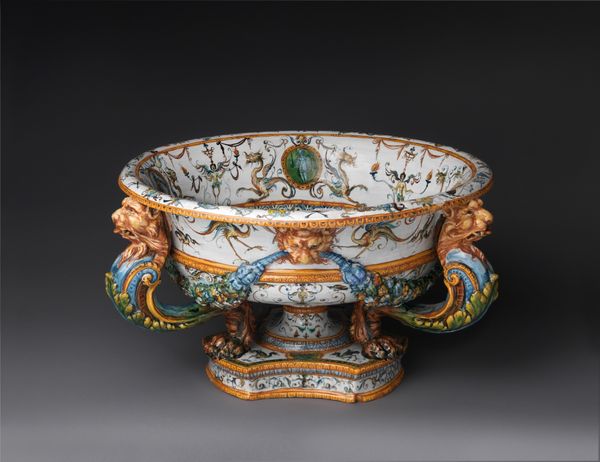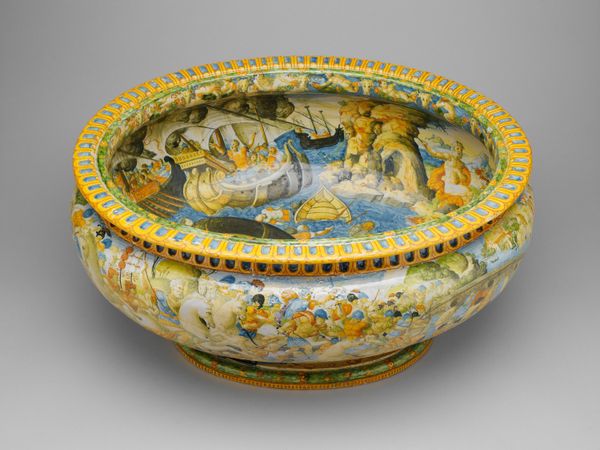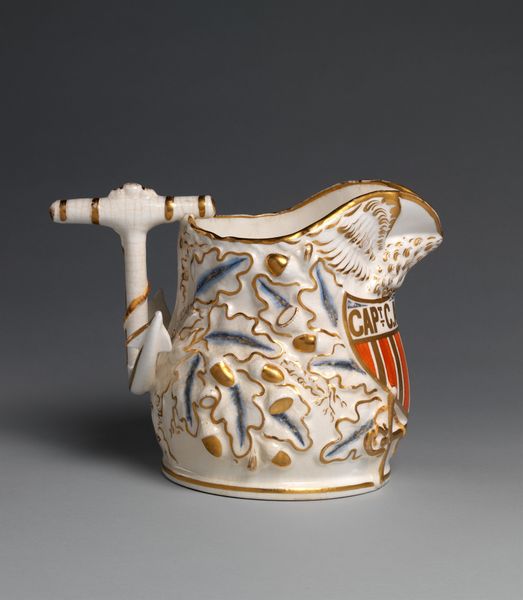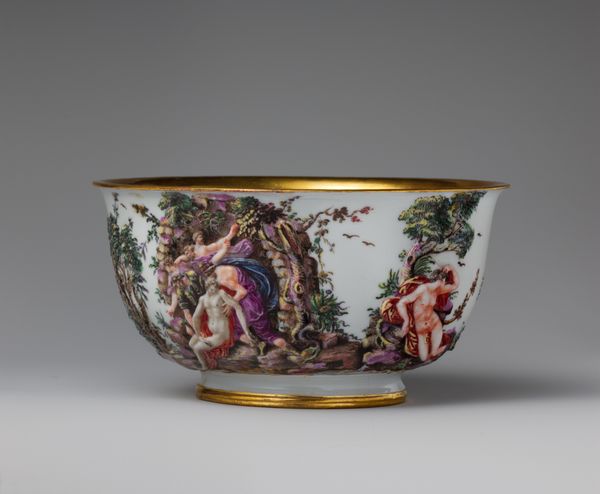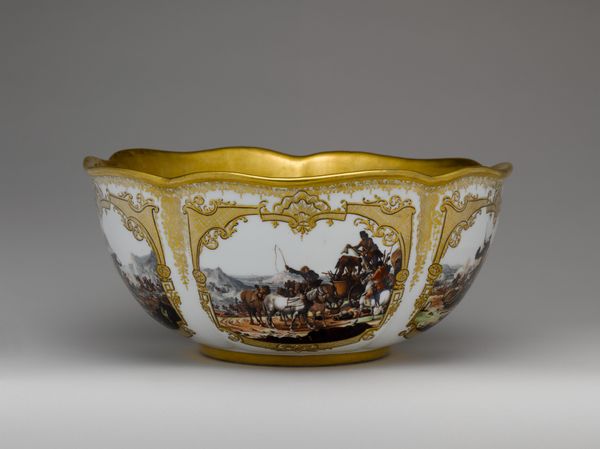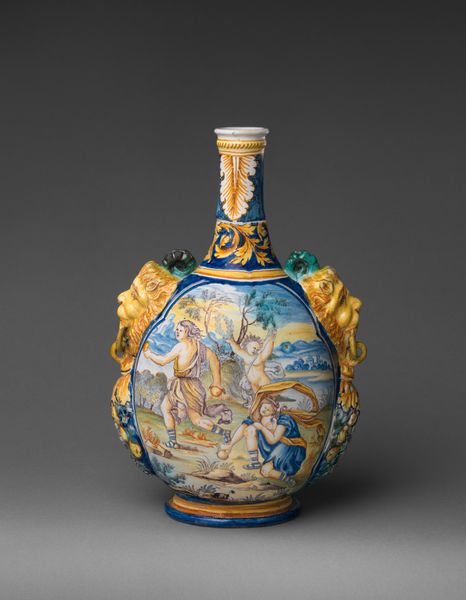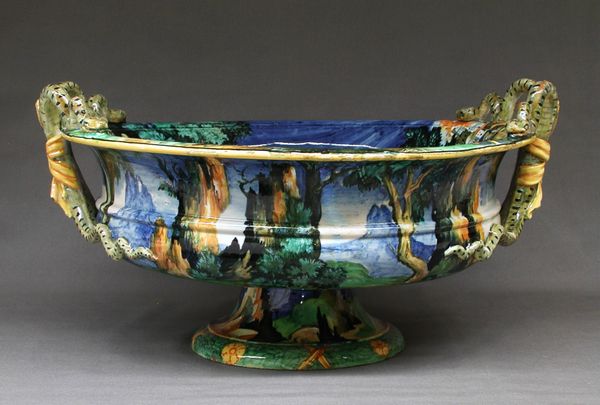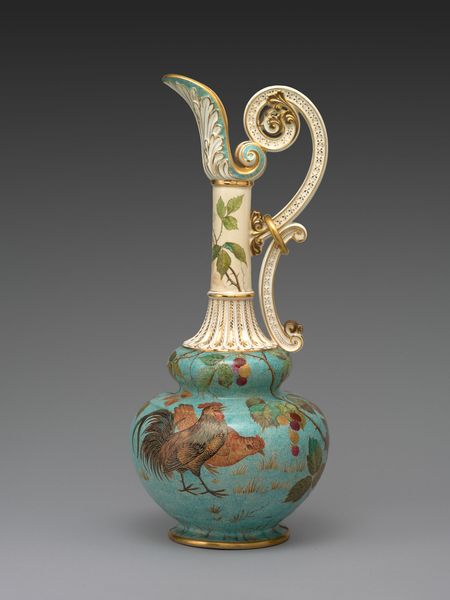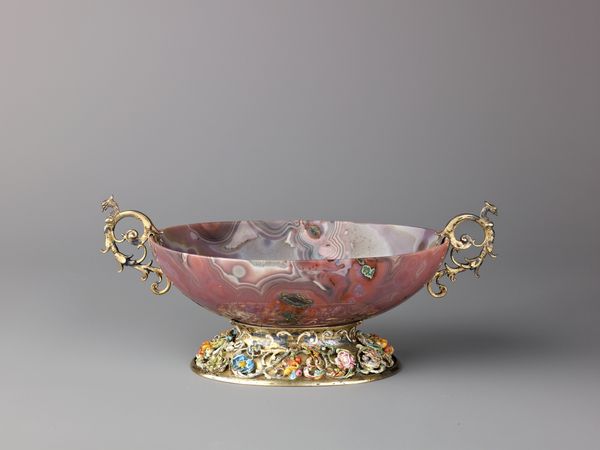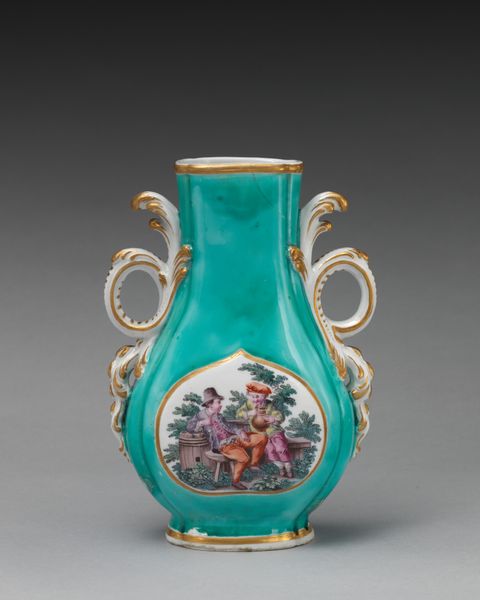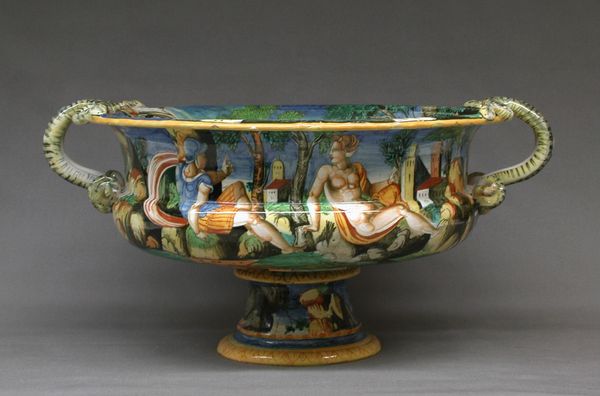
Wine cooler with Charles V’s Victory at Mühlberg 1555 - 1595
0:00
0:00
ceramic, sculpture
#
ceramic
#
mannerism
#
sculpture
#
history-painting
#
decorative-art
#
italian-renaissance
Dimensions: Overall (confirmed): 5 7/8 × 19 1/2 × 19 1/2 in. (14.9 × 49.5 × 49.5 cm)
Copyright: Public Domain
Curator: My goodness, look at the ornamentation! The handles morph into grotesque masks, contrasting dramatically with the lion heads along the lower register. A veritable bestiary crafted into a practical object. Editor: Indeed, it is rather flamboyant, isn’t it? We’re looking at a ceramic wine cooler, believed to have been created between 1555 and 1595. It commemorates Charles V's victory at Mühlberg. The piece is currently held at the Metropolitan Museum of Art. Curator: The craftsmanship is extraordinary. Notice the artist's meticulous depiction of figures amidst the chaotic battle scene rendered within the bowl itself. It almost reminds one of an ancient Roman frieze. How do you view the narrative on display, in terms of sociopolitical forces, if at all? Editor: The imagery absolutely functions as a display of power and a carefully constructed historical narrative. This wasn’t simply decorative; it was propaganda intended to broadcast Charles V’s authority after a decisive victory. Pieces like these reinforce not just his might, but also his legitimacy to rule. The fact that it depicts him in battle gives off a sense of righteous rule through action. The reception of this wine cooler likely differed across social strata. Aristocrats could reflect upon its grandeur and political significance, whilst others perhaps experienced just a vague understanding regarding Charles V’s authority through witnessing or merely hearing tales of those privileged enough possess such items. Curator: Certainly. The distribution of visual information in the piece contributes heavily toward reinforcing specific hierarchies of power! Consider how the artist renders depth—a flattened picture plane crowded with overlapping figures; the sheer busyness of the design seems calculated to overwhelm. Is that intentional do you imagine? Editor: Most definitely. That’s very insightful because I believe such aesthetic choices work precisely to impress the viewer with both military prowess and also the intricate, far-reaching administration involved in his conquests! These are material claims about cultural ascendancy that reflect social values during Italian Renaissance, yet its decorative aspect places it firmly inside the canon associated solely decorative work today! Curator: Precisely. It reveals much of how visual signifiers once conveyed far more weight than simply ornamental value. Looking again, though, at the formal composition—one notes a deliberate effort towards balance, the contrasting forms creating visual rhythm. This has indeed been revealing to observe further through both lenses! Editor: A rewarding combination to assess its historical reverberations, while unpacking artistic merits—I agree!
Comments
No comments
Be the first to comment and join the conversation on the ultimate creative platform.
